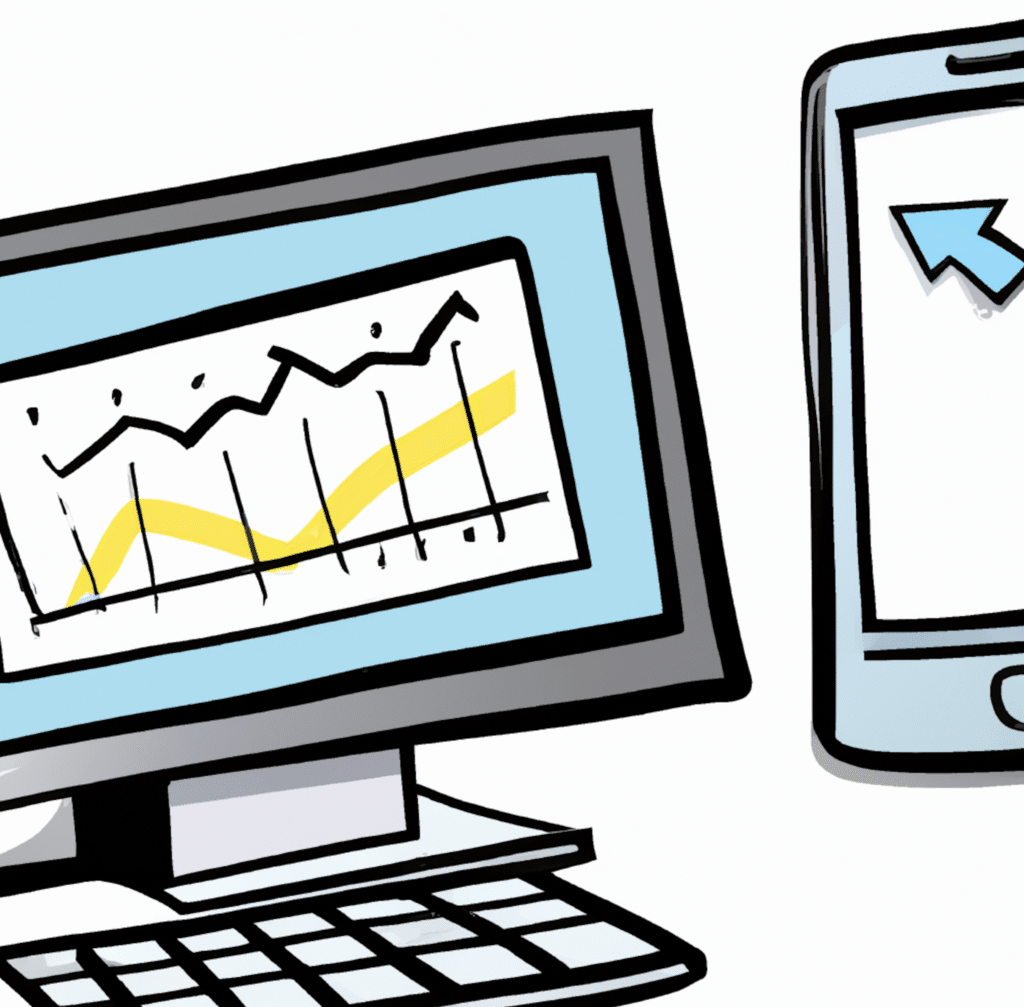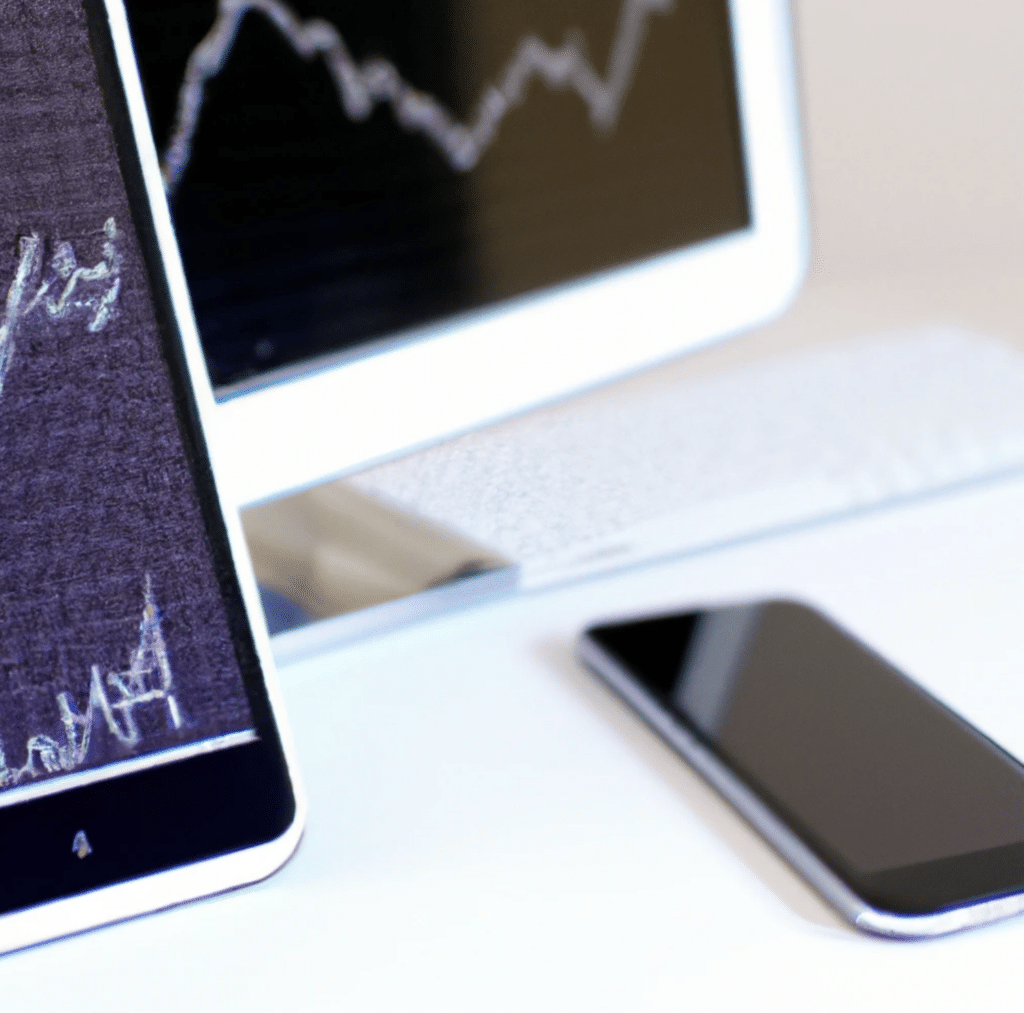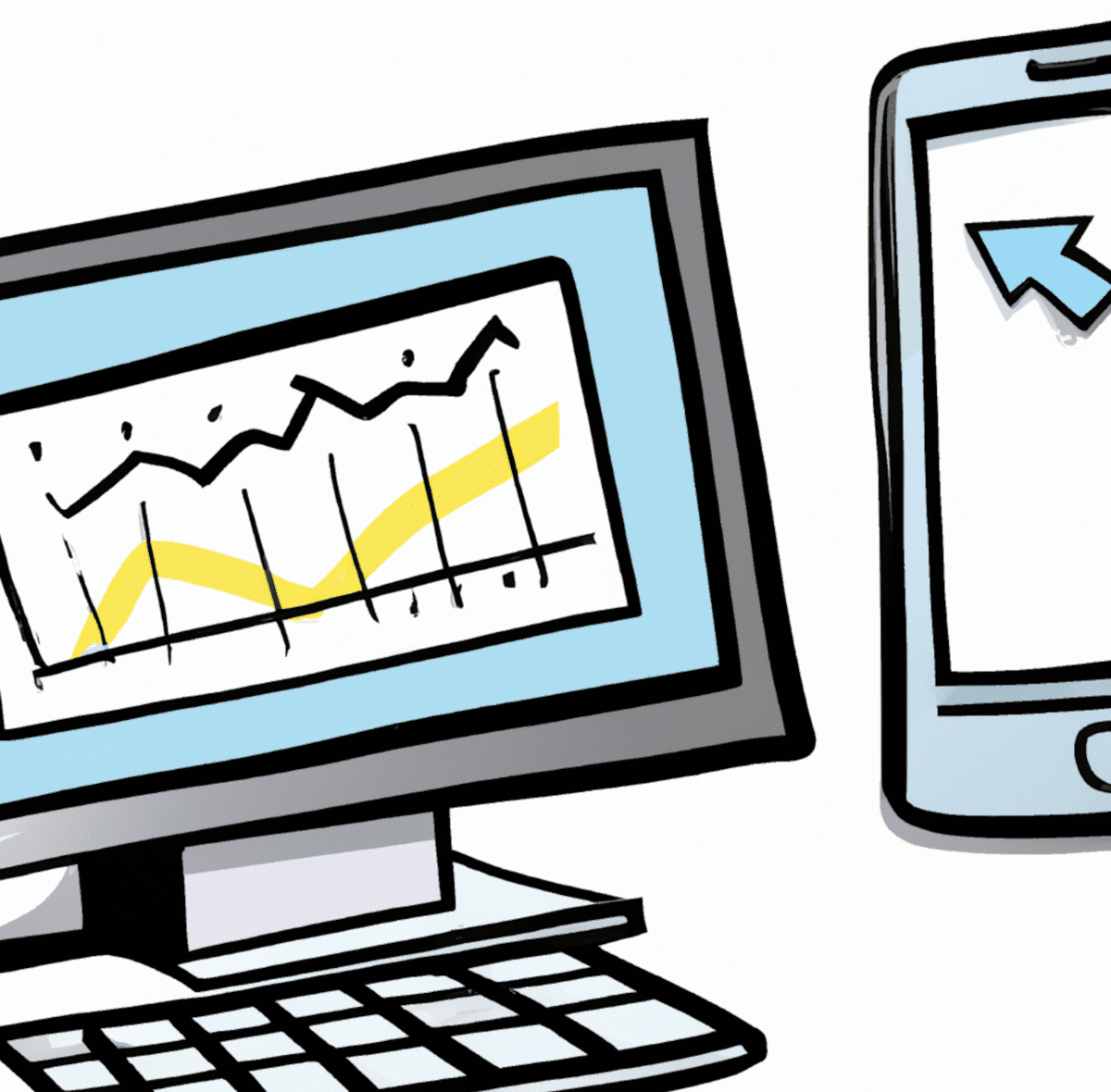Have you tried to decide between the sleek convenience of mobile stock trading apps and the robust power of desktop platforms? Well, you’re not alone. Let’s look a bit closer at the differences in this article.
- Evolution of Stock Trading Platforms: Do you remember the days when stock trading was limited to calls and floor trading? Then through bulky desktop computers and fast forward, and here, we are, with platforms right at our fingertips in our smartphones!
- The Rise of Mobile Apps: With the increased pace in today’s society, mobile apps have become the go-to for many. Quick trades, real-time updates, and all while you can sit and sip your coffee at a café.
- Why Desktop Still Holds Ground: Believe it or not, the good old desktop platforms have their charm. For those intense analysis sessions, multiple charts, and when you need everything spread out in front of you, desktops are still your trusty companions.

Benefits of Mobile Stock Trading Apps
Convenience and Portability
With mobile trading platforms, the world becomes your trading floor. Whether you’re lounging on a beach or waiting for your coffee, trading is just a tap away.
- Trading on-the-go: No longer chained to a desk, you can look at the markets anytime, anywhere.
- The Advantage of Instant Access: Those crucial seconds can make a difference. With mobile platforms, you always have instant access to the financial markets.
Real-time Alerts and Notifications
Missed opportunities? Not on our watch! Mobile apps give you the opportunity to always stay in the loop.
- Staying Updated with Market Movements: Real-time alerts mean you’re always on top of the game.
- Customizing Alerts: Whether it’s a specific stock or an entire index, set your preferences and let the app do the rest.
Simple User Interfaces
No one likes unnecessary complications, especially when money’s on the line.
- Intuitive Design for Beginners: New to the scene? Mobile stock apps often offer a more user-friendly experience.
- Streamlined Features: Quick actions, simplified charts, and everything you need, minus the clutter, can it be any better?
Mobile Features Help
Your phone’s not just a phone anymore. It’s your trading companion.
- Biometric Security: Quick logins with just a fingerprint or a face scan. Secure and swift!
- Camera Integration: Need to verify your identity or scan a document? Your phone’s camera has got you covered.
Drawbacks of Mobile Trading Apps
Screen Size Limitations
While mobile screens have grown, they, unfortunately, still can’t match the expanse of a desktop monitor.
- Challenges in Detailed Chart Analysis: Ever tried squinting at a complex chart on a sunny day? That’s almost impossible to see.
- Viewing Multiple Stocks: On a desktop, you can have multiple windows open. On mobile? It’s more of a challenge.
Reduced Analytical Tools
Mobile platforms are sleek and streamlined, but sometimes, a little too streamlined.
- Limited Capabilities: Some advanced tools and features might be missing or simplified.
- Over-reliance on Simplified Data: While simplicity is often great for convenience, it’s essential not to miss out on crucial data when trading.
Battery and Data Consumption
Trading apps are fantastic, but they do come at a cost, however, this downside gets smaller by the day as batteries improve and data cost decreases.
- Impact on Phone’s Performance: Continuous trading can drain your battery faster than you’d think.
- Data Usage: Especially if you’re not on Wi-Fi, trading apps can consume a significant chunk of your data plan.
Security Concerns Specific to Mobile
While mobile trading apps have improved significantly from a security perspective, there are still some concerns.
- Risks of Public Wi-Fi Networks: Trading on that free café Wi-Fi? Think twice. Public networks can be really unsafe and you increase your risk of a hacker attack.
- Mobile Malware and App Vulnerabilities: Ensure your chosen app is from a reputable source and always keep it updated.
Benefits of Desktop Trading Platforms
Comprehensive Analytical Tools
Desktop platforms are like the Swiss Army knives of trading. They come loaded with a lot of tools.
- Advanced Charting and Technical Analysis: On desktop platforms, you have the ability to dive deep into your chosen assets with detailed charts and analyses.
- Multiple Indicators and Overlays: Customize your charts with plenty of indicators. From moving averages to Bollinger Bands, you can look at them all.
| Popular Indicators | Description |
|---|---|
| Moving Averages | Tracks average prices over a specified period. |
| RSI (Relative Strength Index) | Measures the speed and change of price movements. |
| Bollinger Bands | Provides a relative definition of high and low prices. |
Use more than one screen for Advanced Analysis
For those who love to multitask and view multiple data points simultaneously.
- The Advantage of Broader Views: Spread out your charts, news feeds, and more across multiple screens to get a better and quicker overview.
- Comparing Multiple Assets Side-by-Side: Analyze and compare different stocks or assets without constantly toggling between windows.
Stable Internet Connections
With desktops, you’re less likely to face those dreaded connection drops.
- Reduced Risk of Disconnections: Wired connections offer better stability than Wi-Fi networks, ensuring your trades go through without a hitch.
- Faster Execution of Trades: A stable connection means quicker response times, which is crucial for day traders.
Customization Options
Make your trading platform truly yours by customization.
- Personalized Dashboard and Workspace: Arrange your tools and charts just the way you like them.
- Saving and Loading Multiple Templates: Found a setup that works for you? Save it and load it up anytime you need.

Drawbacks of Desktop Trading Platforms
However, there are some drawbacks also to desktop trading platforms, not only mobile trading apps.
Lack of Mobility
Unlike mobile stock apps, desktops keep you anchored.
- Tied to a Specific Location: Want to trade from a beach in Bali? Then, desktops might not be your best bet.
- Challenges in Remote Trading: While remote desktop solutions exist, they’re not as seamless as native mobile stock trading apps.
Software Updates and Compatibility Issues
The tech world is always evolving, and sometimes, that could mean setbacks along the way.
- Regular Updates and Their Impact on Trading: An unexpected update can disrupt your trading day.
- OS-specific Challenges and Bugs: Whether you’re Team Windows or Team Mac, each OS has its quirks.
| Operating System | Common Issues |
|---|---|
| Windows | Compatibility with older software versions. |
| macOS | Limited support for certain trading platforms. |
Hardware Limitations
If you don’t have the latest more expensive computers, you probably face some limits.
- Dependence on Computer Performance: A slow computer can mean missed trading opportunities.
- The Need for Regular Hardware Upgrades: To keep up with the latest software, sometimes a hardware boost is necessary.
Space and Memory Consumption
Trading platforms can be quite resource-hungry.
- Storage Requirements for Advanced Platforms: Some platforms can take up significant disk space, especially with historical data.
- Impact on Computer Speed and Multitasking: Running multiple tools and charts can slow down other tasks.
Security Concerns with trading apps vs platforms
Let’s look closer at the safety measures and potential risks associated with trading apps and desktop platforms.
Mobile Trading App Security Features
Mobile devices come with their own set of security protocols, but are they enough?
- Biometric Access: Fingerprint and facial recognition can add an extra layer of security, but how foolproof are they?
- Two-Factor Authentication (2FA): A second layer of defense, but it’s crucial for you to make sure it’s activated.
- Encrypted Data Transmission: Ensures your data is scrambled and unreadable during transit. But you have to check if your app uses this!
Desktop Platform Security Protocols
Desktops have been around longer, and their security measures have evolved over time and hence are probably more secure than those on the apps.
- Firewalls and Antivirus Software: Your first line of defense against malicious attacks. But you need to remember to update them regularly.
- VPN (Virtual Private Network): Masks your IP address, providing an added layer of security, especially if you’re trading on public networks.
- Physical Security: Unlike mobiles, desktops are less likely to be lost or stolen. But it could always be a good idea to have a backup of your data!
User Experience: Mobile vs Desktop
A platform or app is only as good as its usability. Let’s compare the user experience on both platforms.
Interface Comparisons
How do the platforms look and feel?
- Mobile: Typically more streamlined, with larger buttons and simpler menus. Great for quick trades, but can it handle more complex tasks e.g. complex charting?
- Desktop: Offers a more comprehensive view, with multiple windows and tabs making complex charting easier. But sometimes it can probably also feel overwhelming.
Speed and Responsiveness
As you know, time is money, especially in financial trading.
- Mobile: Generally faster for quick tasks, but might lag with heavy multitasking.
- Desktop: Built for multitasking, but if you’re not sitting by the desktop a quick trade will not be managed as well as on a trading app.
FAQs
A: Absolutely! Many traders use desktop for in-depth analysis and mobile for quick trades on-the-go.
A: Desktop platforms typically offer a more comprehensive set of tools, multi-screen support, and a larger display for detailed analysis. They’re often preferred for in-depth research and complex trading strategies.
A: Many modern trading platforms offer both desktop and mobile versions that can be synced. This allows traders to start their analysis on a desktop and execute trades or monitor the market on-the-go with their mobile trading app.
A: While mobile apps have come a long way, some advanced charting tools, analytical features, and multi-window views might be more refined or exclusive to desktop platforms. However, this gap is narrowing as mobile apps continue to evolve.
Tips on further reading:

